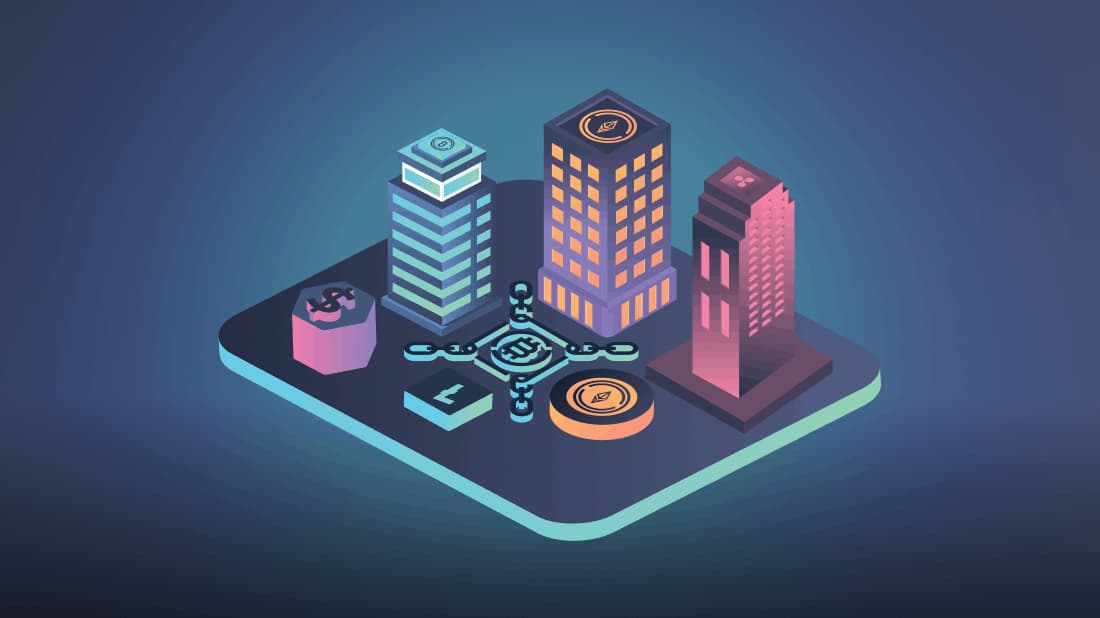
The real estate industry is transforming due to the advent of Web3 and decentralized technologies – like blockchain. These innovations, utilizing asset tokenization and smart contracts, are set to redefine property transactions, investments, and operations.
Understanding Real Estate and Web3
The concept of tokenizing real estate assets emerged as one of the earliest applications of blockchain technology. This involves the creation of digital tokens that represent ownership of specific properties or parcels of land. In 2018, the first tokenized real estate asset was successfully transacted on a blockchain platform. Additionally, integrating smart contracts helped automate and streamline property transactions, as they can manage and facilitate property transfers highly efficiently.
Later, in 2019, blockchain-based peer-to-peer property rental platforms emerged, allowing individuals to directly lease their properties without intermediaries, ushering in a new era of decentralized property rental.
In recent years, many businesses and organizations have been actively exploring the potential of Web3 and blockchain technology in the real estate sector. These companies mainly tokenize real estate assets, develop decentralized property management systems, and implement blockchain technology to record and monitor land registry transactions.
This week’s featured article explores how these changes affect real estate and the broader Web3 ecosystem.
Web3 Technologies Changing the Real Estate Space
- Tokenization of Real Assets:
Web3's most notable impact on real estate is the tokenization of physical assets. Blockchain technology divides real estate properties into digital tokens, enabling broader participation in property ownership. This approach democratizes access to the real estate market, making it accessible to smaller investors previously excluded. Tokenization also increases liquidity in real estate markets by simplifying the sale of property tokens and reducing the time and costs involved in traditional transactions. Smart contracts embedded in these tokens further automate property management tasks like rent collection and maintenance.
- Decentralized Property Records:
The conventional real estate sector relies heavily on centralized property records managed by government authorities. However, these systems are prone to errors, fraud, and inefficiencies. Web3 introduces decentralized property records stored on a blockchain, offering increased transparency and security. Transactions are recorded immutably, reducing the risk of fraud and disputes. This transparency enables buyers and sellers to independently verify property history and ownership, reducing reliance on intermediaries.
- Property Crowdfunding and Decentralized Finance (DeFi):
Web3 also opens doors to property crowdfunding, allowing individuals to pool resources for real estate projects. These platforms use blockchain technology to bring transparency and seamless profit distribution among investors. Additionally, integrating decentralized finance (DeFi) in real estate facilitates the lending, borrowing, and trading real estate assets, bypassing traditional financial institutions.
- Smart Contracts for Rental Agreements:
Web3 technology introduces smart contracts to real estate rental agreements, automating rental payments, security deposits, and lease renewals. These contracts save time, reduce administrative burdens, and enhance trust between landlords and tenants through transparent and automatically enforced terms.
Conclusion:
Web3 technologies are reshaping the real estate landscape. Tokenization, decentralized property records, smart contracts, and property crowdfunding transform property transactions, ownership, and management. While these innovations hold immense potential, they come with regulatory challenges that demand adaptation from industry stakeholders. Striking a balance between innovation and regulation is essential for creating a secure and transparent real estate marketplace. Nevertheless, Web3 is undeniably influencing the future of real estate, making it more accessible, efficient, and inclusive for all.



